Science Fiction Masterworks Series
ConversazioniAnal-retentives
Iscriviti a LibraryThing per pubblicare un messaggio.
2baswood
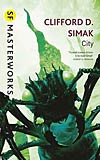
1952 Clifford D Simak - City (read and reviewed)
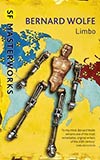
1952 Bernard Wolf - Limbo (read and reviewed)
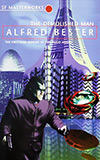
1953 Alfred Bester - The Demolished Man (read and reviewed)
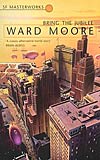
1953 Ward Moore - Bring the Jubilee (read and reviewed)
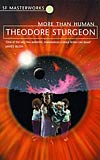
1953 Theodore Sturgeon - More than Human (read and reviewed)
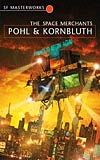
1953 Frederik Pohl & C M Kornbluth - The Space Merchants (read and reviewed)
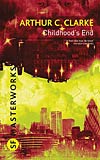
1953 Arthur C Clarke - Childhoods End (read and reviewed)
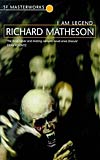
1954 Richard Matheson - I Am Legend (read)
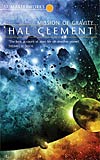
1954 Hal Clement - Mission of Gravity (read and reviewed)
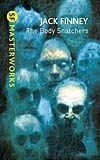
1955 Jack Finney - The Body Snatchers (read and reviewed)
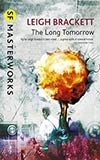
1955 Leigh Brackett - The Long Tomorrow (read and reviewed)
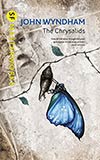
1955 John Wyndham - The Chrysalids (read and reviewed)
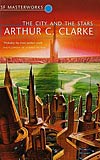
1956 Arthur C Clarke - The City and the Stars (read and reviewed)
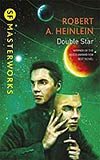
1956 Robert A Heinlein Double Star (read and reviewed)
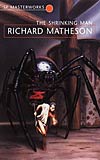
1956 Richard Matheson The Shrinking Man (read and reviewed)
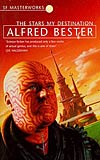
1956 Alfred Bester The Stars my Destination (read and reviewed)
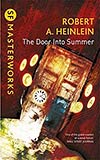
1957 Robert A Heinlein The Door into Summer (read and reviewed)
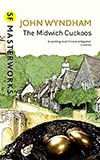
1957 John Wyndham - The Midwich Cuckoos (read and reviewed)
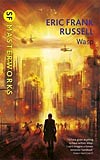
1958 Eric Frank Russell Wasp (read and reviewed)
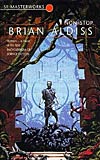
1958 Brian W Aldiss - Non-stop (read and reviewed)
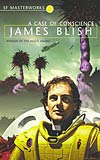
1958 James Blish - A Case of Conscience
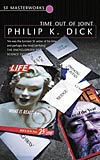
1959 Philip K Dick Time Out of Joint
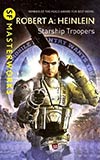
1959 Robert A Heinlein - Starship Troopers
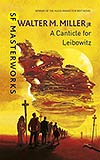
1959 Walter M Miller - A canticle for Leibowitz
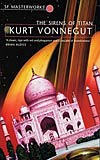
1959 Kurt Vonnegut jnr The Sirens of Titan
3Macumbeira
Matheson rocks !
loved his "I am legend"
loved his "I am legend"
4baswood
Number 11 on the list

Leigh Brackett - The Long Tomorrow
Published in 1955 and now part of the science fiction master work series this is a dystopian novel and probably one of the first to consider what the earth would be like after a nuclear war. Brackett imagines a world that has lost perhaps four hundred years of civilisation. A world of few people who now live in fear of science and the big cities and have turned to religion to supply their spiritual needs.
The story takes place in America and from the point of view of two teenage cousins living in the village of Piper's Run. The strict religious based society is agricultural, there are no machines, the cities have been abandoned and with them the provision of electricity. Fear of the civilzation that brought the war of Destruction some 60 years previously is beaten into the younger generation. The Colter cousins have not had their curiosity curtailed by the harsh laws and when Esau steals a radio from the schoolmaster they risk everything in trying to make it work. There is a rumour of a city that has survived the Destruction, but after witnessing the stoning to death of a man rumoured to have been there, the cousins realise they would be risking their lives to find Bartorstown.
The book is in three parts the cousins lives in the village of their birth and their escape to a slightly larger riverside town is part one. Following its conflagration they travel across America to the fabled Bartorstown which takes up part two and their experiences in Bartorstown is handled in the final part. The point of view resting with one of the two teenage boys makes it feel like young adult fiction and Brackett writes well in telling the adventurous journey across a post apocalyptic America. The violence is kept within bounds as she is more concerned with their development into young men. The mystery of the city of Bartorstown becomes the raison d'etre of the novel and the hook to keep the reader turning the pages. The book reflects the more innocent, uncomplicated times of the nineteen fifties, but with the fear of progress and the bomb.
There are no super hero or heroic deeds as the story has a realistic setting, however the society that Brackett describes is strictly patriarchal and moving further in that direction after the destruction of the cities. There is no racism or overt jingoism as it would appear that all the world has suffered the same fate. Todays science fiction readers may find the story a little tame, but its limited world building and air of mystery might be enough to keep them entertained. I enjoyed it and so 3.5 stars.

Leigh Brackett - The Long Tomorrow
Published in 1955 and now part of the science fiction master work series this is a dystopian novel and probably one of the first to consider what the earth would be like after a nuclear war. Brackett imagines a world that has lost perhaps four hundred years of civilisation. A world of few people who now live in fear of science and the big cities and have turned to religion to supply their spiritual needs.
The story takes place in America and from the point of view of two teenage cousins living in the village of Piper's Run. The strict religious based society is agricultural, there are no machines, the cities have been abandoned and with them the provision of electricity. Fear of the civilzation that brought the war of Destruction some 60 years previously is beaten into the younger generation. The Colter cousins have not had their curiosity curtailed by the harsh laws and when Esau steals a radio from the schoolmaster they risk everything in trying to make it work. There is a rumour of a city that has survived the Destruction, but after witnessing the stoning to death of a man rumoured to have been there, the cousins realise they would be risking their lives to find Bartorstown.
The book is in three parts the cousins lives in the village of their birth and their escape to a slightly larger riverside town is part one. Following its conflagration they travel across America to the fabled Bartorstown which takes up part two and their experiences in Bartorstown is handled in the final part. The point of view resting with one of the two teenage boys makes it feel like young adult fiction and Brackett writes well in telling the adventurous journey across a post apocalyptic America. The violence is kept within bounds as she is more concerned with their development into young men. The mystery of the city of Bartorstown becomes the raison d'etre of the novel and the hook to keep the reader turning the pages. The book reflects the more innocent, uncomplicated times of the nineteen fifties, but with the fear of progress and the bomb.
There are no super hero or heroic deeds as the story has a realistic setting, however the society that Brackett describes is strictly patriarchal and moving further in that direction after the destruction of the cities. There is no racism or overt jingoism as it would appear that all the world has suffered the same fate. Todays science fiction readers may find the story a little tame, but its limited world building and air of mystery might be enough to keep them entertained. I enjoyed it and so 3.5 stars.
5baswood

The Chrysalids - John Wyndham
The message that some people take from this 1955 science fiction classic is 'don't be frightened of change, always look forward and never look backwards. Change is not always for the best especially when a human made apocalypse seems to have wrecked half the planet. In Wyndham's novel the benefits are a new breed of humans with telepathic skills and so better, faster communications might on the surface seem be a boon to society, however faster communication comes with it's own problems and when super telepathic users start to sense the emotions behind the transmitted thoughts then I can see problems. Wyndham doesn't get to examine those issues in this book whose main theme is a small mutant group fighting for their survival.
In Wyndham's novel the apocalypse on earth happened three hundred years ago and the novel opens with a society that has looked backwards instead of forwards. They have blamed the destruction on humanity moving too far away from God's image. Of course they know exactly what God's image is from the bible (God made man in his own image) and so in a post atomic world anything that is deemed as mutant is destroyed. The novel is set is the village of Waknuk (or it could be Nuk(e)wak) where one of the younger generation (David) starts to understand that he can read other peoples minds through thought pictures. He discovers there are eight others within a ten mile radius, who have similar gifts, but knowing that his father is one of the most strict enforcers of the law against mutants he lives in fear that his mutant abilities will be discovered. He grows up as quietly as he can, but when his younger sister also develops the gift and is unable to control her much more powerful transmissions it is only a matter of time before the group of telepaths are discovered. David has dreams of a society that are something like the ones that destroyed their civilisation, but the inhabitants of Waknuk have become so insular that David can find out nothing about the people that lived on the earth over 300 years ago. The Waknukians are a farming community who live by the teachings of the bible, they are back in the age of horsepower with only one large ancient steam engine to do the heavy work. They are fighting a battle against mutant crops and mutant livestock as well as mutant people some of whom live in the Fringes where mutations have run wild.
Olaf Stapledon's novel Odd John published in1935 explored similar themes to Wyndham's novel and in my opinion delved more deeply into issues facing a mutant group who come to see themselves as an improvement on those around them. Wyndham however keeps his story moving along tightening up on the tensions for a group of people fighting for their freedom to exist and it is told from David's perspective and so there is little space given for reflection on wider issues. The story works well and Wyndham avoids most of the racism and sexism of much science fiction written at this time. In my opinion this is nowhere near as ambitious as Day of the Triffids but one could argue it is more tightly written 4 stars.
7baswood
Arthur C Clarke - The City and The Stars
Published in 1956 this is another entry from Clarke in the Masterworks Science fiction series. Clarke concerns himself with the big picture in fact the biggest of pictures, a search for a superior intelligence that will oversee the cosmos: a guiding hand perhaps for humanity. In his 1953 novel Childhoods End it was the seemingly benevolent overlords who took human life to a further stage in their development. In the 1948 short story the Sentinel that was later opened out into 2001 A Space Odyssey in 1968: Clarke was again looking forward to man's relationship to the universe and searching perhaps for that all powerful being. The City and the Stars takes place much further in the future when man had conquered the galaxy, but his empire had collapsed and his descendants have taken refuge back on their home planet earth. Perhaps they never did find that omnipresent intelligence that was the subject of so many of their dreams, instead they came across the invaders who beat them back to earth where they have fabricated a city (Diaspar) controlled by machines and are content to live and revel in their immortality, but frightened to look up to the stars.
Clarke's search for that all knowing intelligence has nothing to do with religion. It is nothing that can be invented internally, one of his characters sums up what might be in Clarke's mind
“he (man) suffered from an incurable malady which, it seemed attacked only homo sapiens amongst all the intelligent races of the universe. That disease was religious mania. Throughout the earlier part of its history the human race had brought forth an endless succession of prophets, seers, sages, and evangelists who convinced themselves and their followers that to them alone were the secrets of the universe revealed."
Diaspar has not had a human newborn for ten million years, then along comes Alvin a unique event. There have been a few other "uniques" recorded in the history bank memories of the machines, but they have all disappeared. As Alvin approaches adulthood he feels the confines of the city and starts to look outside. His escape fuels the story and once again homo sapiens are reaching for the stars. Like other Clarke novels this is a story of a search for something else and readers have to go with the flow and allow themselves to be swept along by Clarke's vision, however opaque that maybe.
Arthur C Clarke was a fine writer and storyteller, he was able to put flesh onto the skeletons of his visions and so in this novel the futuristic city of Diaspar is lavishly described. He is able to place his readers into a world that he invents without resorting to pages of background material. He is largely free from the sexism and racism that can mar other writers of this period. One can still pick up his novels and feel the wonder even if the world of science fiction writing has now moved on from the sometimes naive writing of the period. I was hooked from the start and stayed with it till the end 4 stars.
Published in 1956 this is another entry from Clarke in the Masterworks Science fiction series. Clarke concerns himself with the big picture in fact the biggest of pictures, a search for a superior intelligence that will oversee the cosmos: a guiding hand perhaps for humanity. In his 1953 novel Childhoods End it was the seemingly benevolent overlords who took human life to a further stage in their development. In the 1948 short story the Sentinel that was later opened out into 2001 A Space Odyssey in 1968: Clarke was again looking forward to man's relationship to the universe and searching perhaps for that all powerful being. The City and the Stars takes place much further in the future when man had conquered the galaxy, but his empire had collapsed and his descendants have taken refuge back on their home planet earth. Perhaps they never did find that omnipresent intelligence that was the subject of so many of their dreams, instead they came across the invaders who beat them back to earth where they have fabricated a city (Diaspar) controlled by machines and are content to live and revel in their immortality, but frightened to look up to the stars.
Clarke's search for that all knowing intelligence has nothing to do with religion. It is nothing that can be invented internally, one of his characters sums up what might be in Clarke's mind
“he (man) suffered from an incurable malady which, it seemed attacked only homo sapiens amongst all the intelligent races of the universe. That disease was religious mania. Throughout the earlier part of its history the human race had brought forth an endless succession of prophets, seers, sages, and evangelists who convinced themselves and their followers that to them alone were the secrets of the universe revealed."
Diaspar has not had a human newborn for ten million years, then along comes Alvin a unique event. There have been a few other "uniques" recorded in the history bank memories of the machines, but they have all disappeared. As Alvin approaches adulthood he feels the confines of the city and starts to look outside. His escape fuels the story and once again homo sapiens are reaching for the stars. Like other Clarke novels this is a story of a search for something else and readers have to go with the flow and allow themselves to be swept along by Clarke's vision, however opaque that maybe.
Arthur C Clarke was a fine writer and storyteller, he was able to put flesh onto the skeletons of his visions and so in this novel the futuristic city of Diaspar is lavishly described. He is able to place his readers into a world that he invents without resorting to pages of background material. He is largely free from the sexism and racism that can mar other writers of this period. One can still pick up his novels and feel the wonder even if the world of science fiction writing has now moved on from the sometimes naive writing of the period. I was hooked from the start and stayed with it till the end 4 stars.
8RickHarsch
go bas go
9Macumbeira
Bas should get a statue.
The output and the quality of his reviews is amazing.
Bas, you should do this for a living !
The output and the quality of his reviews is amazing.
Bas, you should do this for a living !
10baswood
>9 Macumbeira: Nobody has ever wanted to pay me for things I enjoy doing.
11RickHarsch
Bas: I am one of the chairpeople of that club.
(And careful what Mac complements with: his national statue is the Manneken pis.)
(And careful what Mac complements with: his national statue is the Manneken pis.)
12Macumbeira
>10 baswood: I hate that remark.
I realize that nobody ever paid me for what I like to do
I realize that nobody ever paid me for what I like to do
13baswood
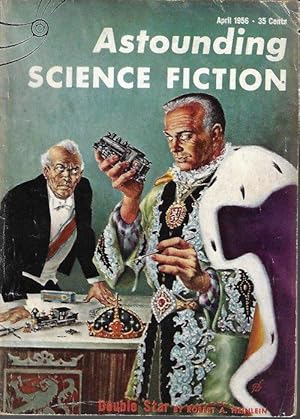
Robert A Heinlein - Double Star
This 1956 Hugo award winning novel is included in the science fiction masterwork series and either has not aged well or was a lack lustre rip-off from the start. It takes as a basis for its story the plot mechanics from the Prisoner of Zenda, dresses them up in a pointless science fiction setting and trots it out in a fairly brief novel. The story is a good one, but if you know it from the earlier book or the film, then Double Star will hold little attraction. I look for a sense of wonder when going back to read novels from a golden age of science fiction, the only wonder I found here was how Heinlein managed to reinvent a good story in such a tawdry fashion that was convincing enough to win him awards. Nothing wrong with the quality of the writing, which is of a good standard for this genre, but ho-hum 2.5 stars.
14baswood
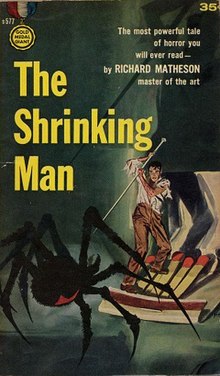
Richard Matheson - The Shrinking Man
Sex and science fiction were uncomfortable bed fellows in the 1950's, and I was surprised to find sexual issues addressed with some sympathy in Matheson's story of Scott Carey; The Shrinking Man. Shrinking an inch a week even after 6 months is likely to cause problems in many marital situations and after a year with no sign of a halt to the shrinking then relationships sexual and otherwise would have to be rethought. Scott Carey is a proud individualist and fights for survival until the very end; this does not usually sit with a more sensitive soul and after all this is a science fiction novel written in the 1950's when male chauvinistic men of mettle were the norm. Now I do not read science fiction from over 60 years ago for its exploration of sexual mores, but I do "sit up" when personal sexual difficulties are not only discussed, but are integral to the story line. Scott Carey in the prime of life does not lose his sexual appetite with his shrinking, but of course finds it difficult to talk about it to his wife.
In I Am Legend: Matheson first successful novel there was an overwhelming feeling of claustrophobia along with an increasingly desperate battle against impossible odds. This formula is largely repeated here: when we meet Scott Carey he is an inch high and is running across a desert, being pursued by a spider. As the book unfolds we learn through flashbacks that Scott has been trapped in the cellar for the last two and a half months and that his world has shrunk with his size. He is an inch tall and is resigned to shrinking one seventh of an inch per 24 hours and so by the end of the week he will cease to exist. We learn that a toxic mixture of radiation and insecticide has caused his condition and despite many weeks of treatment no cure has been found. He has remained at home being supported by his wife and his young daughter to the best of their abilities, but after he loses his job then the family face an increasingly difficult financial situation. The flash backs are interspersed with Scotts battle to stay alive in an increasingly hostile environment for the last seven days of his life. Finding water and food sets him off on climbing expeditions that test his physical abilities to their limit as well as extreme problem solving. These sections of the story are an adventure wonderland, but the interspersions of the back story are no less intriguing. They are mostly skilfully done and reveal aspects of Scotts character as well as an increasing alienation from a world that has grown too big for him.
One of the most poignant episodes is before eventually being trapped in the cellar, he is banished there by his wife who has to employ a child minder while she goes out to work. Scott has dealt badly with the publicity caused by his condition and does not wish to expose himself any further hence he must hide in the cellar. He fantasises about a beautiful 17 year old female child minder and when he finally catches sight of her he sees a dumpy teenager, but he still cannot control his desire and risks his life for glimpses of her from the high cellar window. This exploration of an inner life, conscious and unconscious puts this book firmly in the category of a novel, albeit a fantasy novel. Matheson has created a fantasy world that is full of realism and although the science is pure gobbledygook, his world is one of wonder. The Shrinking Man was published in 1956 and is now part of the science fiction masterwork series. The book has of course been made into a successful film "The Incredible Shrinking Man" scripted partly by Matheson.
This is a fantasy novel, although a dark and brooding one with gothic elements that might appeal to a crossover readership, Matheson has also made a name for himself in the horror genre and as a genre novel I rate it as a five star read.
15Macumbeira
Thanks for the review Bas! I have been a Matheson fan since my early teens and it is good that you remind us of his talent. thumbed !
16baswood

Alfred Bester - The Stars my Destination
Gully Foyle is my name
Terra is my nation
Deep space is my dwelling place
And Deaths my destination
Gully Foyle is the hero of Alfred Bester's The Stars my Destination and we first meet him trapped in a small air-locked compartment of a wrecked spaceship; he is the only survivor. The nursery jingle from his child hood passes through his ravelling mind. Bester's science fiction classic published in 1956 was so well known that in 1968 the Liverpool Poet Adrian Henri was able to publish a poem based on a section from the novel. Starting with the Chapter where Gully Foyle is imprisoned in the caves of Gouffre Martel in South West France:
Gouffre Martel. Darkness
Under the rock and earth a voice
Lying your tigerface blazing in the dark
Listening to her
Your mind still trapped in the broken spaceship
Flaming man appearing like your vengeance
On the beach, in the 3-ring cosmic circus
Your scarred body your tattooed face
Leaping between Aldebaran and Ceres
Eternity at your feet. The stars your destination
The blurb on the front page of my kindle edition says "Considered by many to be the greatest single SF novel" - Samuel R Delaney. While I might not agree with that, even for novels in the "golden age" of 1950's science fiction it does combine many of the aspects that made this genre so popular with younger readers. It is a rip roaring adventure story, the hero is placed in a number of seemingly impossible situations, there is intrigue and mystery and a denouement that many would not see coming. In addition to this it has a central idea that has that sense of wonder that permeates the story. The idea that humans in the 25 century can "jaunt" that is can teleport themselves if they can know and remember the exact co-ordinates of their destination and their jumping off point. This relatively new discovery that most people can master with a bit of practice has led to social problems with people anxious to keep teleporters or jaunters out of their property. The 25th century finds the human race masters of the inhabitable worlds of the solar system, but greed and corruption has led to a society where the fittest are able to enjoy the limited resources.
Gully Foyle is a 3rd class mechanic on a spaceship, he is devoid of ambition, but an incident where he is denied a rescue attempt when he is in a desperate situation has galvanised him to seek revenge and unlocked parts of his mind that has lain dormant. He embarks on a series of adventures and pits his wits against some of the most powerful men on earth, not always remaining one step ahead. His brute force carries him through, but there is plenty of collateral damage along the way.
It is 1950's science fiction and so revenge is a driving force for many of the characters: it is a fast paced but sexism and racism is for the most part not too obvious, but it is a thriller and so character development is not a prime consideration. There is much going on and Bester's fertile imagination and ability to move the action along and create some good situations make this an exciting read. 4.5 stars.
17baswood

The Door into Summer - Robert A Heinlein
If you are going to indulge yourself in reading 1950's science fiction, you can't avoid Heinlein. I have previously read four books by him. Two collections of short stories and two novels: The Puppet Masters and Double Star, were both fast moving science fiction tales that relied very much on storytelling rather than characterisation. The Door into Summer is very much of the same vein, but this time there is an excellent story to tell and Pete the cat is the best character.
The novel was published in 1957, but Heinlein imagines an America in 1970 and again in the year 2000. Our hero Daniel Boone Davis is an engineer and inventor, and a typical character of much 1950's science fiction, he has a great sense of personal liberty and self reliance; an individual who does things his own way, not afraid to kick against corporate authority and not afraid to take risks. He invents a series of household aids that become successful, he is cheated out of the profits of his company by his secretary and his business manager and is tricked by them into taking the big sleep (suspended animation) for a thirty year period. He awakes in 2000 still infused with a need to use his engineering skills, but the world has moved on. He gets a job in an off shoot of the company he started and is intrigued that the original patents for their best selling machines still bear his name. He discovers that time travel has been successfully attempted and tricks his way into going back to 1970 to discover what happened and to collect Pete his cat.
It is an intricate tale of time travel forwards and backwards first by cryogenic suspended animation and then by a time machine, but the story evolves around D B Davis's attempts to put things right back in 1970 and to get the girl he loves. His main motive however is that he wants to continue working with his beloved inventions, but has discovered he much prefers the future 2000, rather than the more dull 1970. Fixing things back in the past while preserving a better future has long been a theme of science fiction writers and while Heinlein spends a little time on theories of time travel, it is really only a plot device. The meat of the book is Davis's attempts to fix things for his own advantage. Heinlein has to invent two scenarios Great Los Angeles in 1970 and Denver the new seat of government of the USA in 2000. He manages this pretty well and the worlds that he describes bear some relation to the worlds that we recognises today. This is such a good story that we can forgive Heinlein almost anything as his tale rushes onwards. It is inventive, funny and full of wonder and it even has a scene in a naturist colony: Heinlein loves the characters in his books to get naked. (although being 1950 he rarely does anything with them).
Last night I started the novel and found I was three quarters of the way through at 1.30 am - what to do? finish or go to bed. The fact that I even thought about finishing it shows what a good page turner it is. 5 stars.
18Macumbeira
Bas, discoverer of GEMS !
19baswood

The Midwich Cuckoos - John Wyndham
The common European cuckoo is a brood parasite, laying its eggs in the nest of other species of birds. If successful it tricks the host bird into raising its young as its own, but the young cuckoo instinctively destroys the other eggs of the host bird. In a quiet village somewhere in middle England most of the childbearing women fall pregnant at the same time after the village has been sealed off for 24 hours probably by aliens. Wyndham imagines what would happen to the village in this cuckoo like scenario. The novel was written in 1957 and that is when Wyndham places his story and he is not altogether wrong in thinking that the village might want to close in on itself perhaps keeping its shame hidden as much as possible. Anyway it makes for an excellent science fiction story.
Wyndham's science fiction writing although dealing with fantastical events will often pause to think about the issues that the story throws up. In this case it is the battle for survival and the savagery of so called mother nature. The wider issues do not usually get in the way of the development of the plot, or the suspense or the excitement of the action and in this novel it is Mr Zellaby an author of philosophical works, living in the village, who thinks more deeply about the wider issues. Wyndham writes however from a male perspective and the women's voices in the village are rarely heard above the desire to nurture the young. One of the male characters says:
‘If we remember that the majority of feminine tasks are deadly dull and leave the mind so empty that the most trifling seed that falls can grow into a riotous tangle'
It is the men who do the fighting it is the men who take action and it is the men who are in control, but this would be typical of the time in which the novel was set and Wyndham certainly knew and could write about society in England in the 1950's. It makes for a quaint story in some ways, but also it has a certain charm, an innocence perhaps. The setting of Wyndham's stories in rural England reflect the ideal of rural English life, he reminds me of a less radical H G Wells.
This is an imaginative work of fiction written in an easy flowing style with an excellent plot. Many of us know the story from the films "Village of the Damned" and then "Children of the Damned". Published in the science fiction masterwork series it raises its head above much of the pulp fiction of the time and still provides an excellent page turning read 4 stars
20Macumbeira
Nice Bas ! Interesting topic
21baswood

Wasp - Eric Frank Russell
Pulp science fiction from 1957 which has somehow become part of the Masterwork science fiction series. It holds the premise that a single person can seriously disrupt a world government if it goes about it in the right way; the analogy is of a wasp in a car full of people that can cause a car crash and this may be true because a friend of mine drove into a ditch when a wasp flew in his car window. While a wasp could cause a car crash we are really into a fantasy world in thinking that one person could be instrumental in bringing down an alien military government with the tactics that the protagonist James Mowry uses in this novel. There is not much science but plenty of fiction.
As a serialised entry in a 1950's pulp magazine this could have been splashed on the front page, but as an example of the cutting edge of science fiction writing in the late 1950's it does not cut. 3 stars.
22baswood

Non-Stop (or Starship) - Brian Aldiss
Brian Aldiss a prolific author of mainly science fiction stories, novels and editor of anthologies gets Non-Stop published in 1958 into the Science fiction Masterwork series. Non-Stop is a good title for this science fiction thriller, which hardly pauses for breath as it takes the reader careering round what soon appears to be an abandoned starship. The book starts gently enough with a primitive human society living as a tribe fighting their way through sections of fast growing plant life. It soon becomes apparent that they are living in a giant man made structure and our hero Roy Complain has visions of better things. He is a hunter but his imagination is stirred by the priest of his tribe who wants to break out of the community. They succeed and soon meet other tribes, intelligent rodents, and a race of giants as they battle their way to a tribe known as the forwards, rumoured to have a more advanced civilisation.
Aldiss has created an imaginative scenario, but has no time to embark on much world building, what he does do, works well enough for his story. It doesn't bear too much introspection and the science is of the most basic kind, but it does create an atmosphere and an air of mystery as the reader is hurtled along to a climax that doesn't disappoint. Aldiss writes well enough for this genre as he shifts the book through the gears of a good adventure story. The absence of overt sexism and racism is a relief and I enjoyed the ride 4 stars.
23baswood
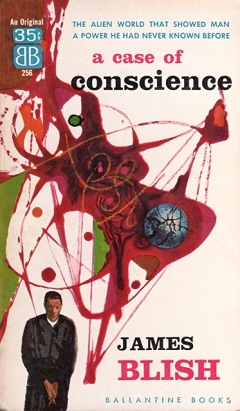
James Blish - A Case of Conscience
This was the next book in my chronological reading of the SF Masterwork series and it took me by surprise. A few years ago I had read Blish's Cities in Flight series which had been aimed squarely at the youth pulp market, however the more thoughtful A Case of Conscience (1958) with its slow moving first part would have tested the resolve of many of those teen readers. Blish is not a writer to let science get in the way of his ideas and as this book moves along the science gets left behind. The two parts to the novel make for an uneven read, especially as the faster moving second section is in danger of leaving his readers scrambling to keep up, but it is satisfactorily if unsurprisingly resolved by the end.
In the first part four specialists are working on an inhabited planet with the task of deciding whether it can be opened up for human contact. Father Ruiz-Sanchez; one of the four is a biologist, but also a Jesuit priest and the arguments as to the suitability of the planet Lithia is told very much from his point of view. The giant race of Lithians are bipedal reptile like creatures with great intelligence and their society is everything that a Christian might wish to see: a veritable Utopia with no crime, no conflict, no ignorance and no wants, a world built on peace, logic and understanding of the natural world the only problem is: a complete absence of anything resembling a God. The planet also has an abundance of materials needed to fashion atomic bombs. The four specialists were not able to reach a conclusion with Father Ruiz-Sanchez convinced that the planet is the Devil's work. As the team are leaving the planet Ruiz-Sanchez is given a fertilised egg by one of the Lithians. The second part of the novel tells the story of the birth and development of the Lithian back on earth.
The mystery of the Lithian society and the arguments between the specialists and the challenge to the faith of Father Ruiz-Sanchez are well set out in the first part, along with an atmospheric description of the rain soaked planet. Blish manages to hold the readers interest: rehearsing his arguments that hold both mystery and wonder even if the Jesuit's thought processes can take some surprising turns. While the first part is thoughtful and assumes some knowledge of literature and religion, the second part hardly stops to take a breath. Somehow Blish makes it all work and I can see why his book has its admirers in the science fiction genre. 3.5 stars.
24baswood
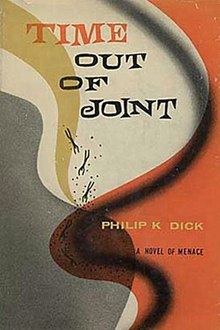
Philip K Dick - Time Out of Joint
Time Out of Joint is now recognised as the first science fiction novel by Philip K Dick that explored the themes that many of his later novels would take further. It is a noticeable break from his earlier efforts of pulp fiction and was published in 1959. It was not an immediate success, his breakthrough novel was Man in the High Castle which won the Hugo award for best novel in 1963. The themes that Dick introduced in his writing like: the nature of reality; how ordinary people have their lives unravel around them, all is not what it seams and characters who are made aware, that there are forces at work of which they are totally ignorant, psychotic events threaten their existence and delusions or surreal images menace their grip on reality. It can be powerful stuff and Time Out of Joint was the first step along this road.
Ragle Gumm who had been decorated for his service in the second world war has settled down in a quiet American town, living with his brother and his bother's wife. He is making a living by winning a daily competition in the local paper and has become something of a celebrity. The competition involves plotting the location of a randomly generated item in one of over a thousand locations. Ragle does this by charts, records and graphs that he works on and updates every day. He has won the daily competition over a two year period. A young couple (Mr and Mrs Black) have recently moved next door and Ragle is starting to feel constrained by the Blacks constant overtures of friendship, but he becomes attracted to Mrs Black and worries that an affair will interrupt his work and would cause trouble with her husband. One day Ragle while sitting on a bus feels the world dissolve around him, his fellow passengers appear as skeletons, this only last for a minute, but he is profoundly shaken. He becomes paranoid about Mr Black and after yet another unwelcome social visit he runs out the backdoor jumps in his car and drives off. He soon finds himself on an unfamiliar dangerous dirt road in the dark and has to abandon his car, he sees the lights of a house ahead.......................He must get help because he needs to be able to post his entry for the competition the next day and there is work to do.
Dick manages in the first part of the novel to create a scenario that is just about believable, there is something not quite right about the world that Ragle and his family inhabit, for example there is television, but no radios, and there is something off kilter in Ragle himself. It is a mystery with an overlay of menace that works well. When the mystery starts to unravel as Ragle pushes for answers to his dilemma; Dick holds back the information skilfully enough to keep the reader entertained. The resolution, even if was too fantastic did not disappoint this reader.
Philip K Dick's novels have been the subject matter for many films and Blade Runner is the most famous, but apart from Man in the High Castle, this is the only other novel from him that I have read. This is an early example of his work and I was impressed. It now appears in the S F Masterwork series and I would rate it at four stars
25baswood

Kurt Vonnegut - The Sirens of Titan
The Sirens of Titan was Kurt Vonnegut's second novel and is included in the science fiction Masterwork series. Published in 1959 it was the novel that won the first of the many awards that Vonnegut won in the genre, although his first novel Player Piano had created a stir. I have previously read Slaughterhouse-five, his most well known book, a couple of times and neither time was I overly impressed. I think it is because I am not in tune with his style of writing. I think because he is such a well known author in the genre and Slaughterhouse-five crossed over into the mainstream, it is perhaps the sort of style that would be off putting for many readers, who were dipping their toe into science fiction for the first time. Certainly I think that would be true back in the 1960's, well before A Hitchhikers Guide to the Galaxy.
There is not much science in The Sirens of Titan, really it is more of a fantasy novel and one that reads like it was cobbled together after a drunken nights storytelling, which I think it was. The writing style has all the elements of an oral story; the sentences are short, the language is simple and it has a conversational style. The organisation feels a bit haphazard and the structure is one you might find in a good story made up as the teller went along. However after saying all this, it kind of works, the reader gets carried along with the story rush, not stopping to think about holes in the plot or the sheer craziness of the story: that is if you have not already tossed the book aside, thinking I am not going to read any more of this rubbish. It works in the genre where a sense of wonder and dare I say it: ideas; bordering on the fantastic; which are more important than literary style.
Of course there are flashes of brilliance in this crazy mess of a book and it is open to all kinds of interpretation; it is a bit like Alice in Wonderland and like Lewis Carroll's book it is funny and genuinely satiric. However in my opinion it has not stood the test of time, although the style has been imitated and I am thinking of Philip K Dick, who managed to run with it taking it to another level. If my thoughts are confused then I can only put this down to having just finished The Siren's of Titan. The story, the plot you don't really need to know. It deserves to be in the masterwork series because of what it is, but I just didn't like it and so 3 stars.
26baswood

A Canticle for Leibowitz - Walter M. Miller.
A science fiction novel published in 1959 and included in the SF masterwork series. It was the only novel by Miller published in his lifetime and is in fact an amalgamation of three shorter stories published between 1952-1957 in The Magazine of Fantasy and Science Fiction. Miller has linked the three stories well enough to the central themes of his novel; they tell of events in different time periods and so the progression through time, told in chronological order gives the novel a sense of unity.
I had trouble warming to the novel, because it is a novel that is written from a religious point of view; particularly a roman catholic position and as my views tend towards the existential; not believing in an all powerful omnipotent God, I found much of the discussion of themes and ideas irrelevant to me. Had I read the novel in the 1960's when I was a teenager and fresh from a Church school then probably I would have found the religious views more pertinent, but I have moved on since then and so perhaps readers like me will find that the novel has not aged well.
The novel starts in the 26th century when much of the world has been destroyed by a nuclear war. Brother Francis Gerard is a novice in the order of the monastery of Leibowitz; which is campaigning for sainthood for its founder. During his lenten vigil he stumbles across an old air raid shelter which contains some documents including a blue print with a connection to Leibowitz. Brother Francis is eventually allowed to copy and embellish the documents by hand and is chosen to take them to Rome for the canonisation of Saint Leibowitz. The second part takes place in 3174. The Albertian Order of Saint Leibowitz has preserved a number of documents after Brother Francis has paved the way for the monastery to be a repository for half understood knowledge, from the previous civilisation. The world is emerging from a new dark age and one of the monks is experimenting with an electricity generator. A secular scholar arrives to examine the documents at a time when new rulers are threatening war. The scholar says it will take decades to understand the memorabilia, but the soldiers accompanying him are busy examining the monastery as a base of operations. The third part takes us to the year 3781. The world is reaping the benefits of a new technological age. Space travel has been accomplished, but two power blocks on earth are once again threatening nuclear war. The church of New Rome has secured a space ship for the order of Leibowitz to take the teachings of the Roman catholic church to the stars should the earth self destruct.
The two major themes of the novel are the cyclical trend of history. The repetition of mistakes; mankind always moving towards self destruction after periods of dark ages and then renaissance. The second theme is the conflict between church and state, this is particularly well argued in parts two and three of the novel. Contained within these themes are human stories that focus the readers attention. Brother Francis's struggles with the Abbot and church hierarchy to inch ahead with the preservation of documents from the past in part one and Brother Kornhoer has similar problems with efforts to generate electricity in part two. The most poignant story is Abbot Zerchi's struggles with the State during a nuclear attack and his arguments against voluntary euthanasia for those terminally ill with radiation sickness. The church is seen as a repository of knowledge and wisdom, but tends to hold back the advance of civilisation. This idea is seen as essential for mankind's survival as the reactionary nature of its functions looks towards mankind's salvation. The characters are swamped by events over which they have no control and as such they struggle for a foothold to mark their existence. The answer that this book postulates is the teachings of the Roman Catholic faith. From my own point of view I am not thrilled by the idea that the only people escaping the earth's destruction are a spaceship full of missionaries to spread the word to those inhabiting planets in other star systems. This would seem like a repetition of the earths destructive cycle.
I can admire the new ground covered in this book. It is a book without a hero and although it deals with weighty themes it manages to create a micro-climate of human stories connected with the Abbey of Saint Leibowitz. It never lets the reader stray too far away from the characters, even if they do at times function as mouthpieces for the ideas that carry this novel forward. There are no female characters in the book, apart from the mutant woman destroyed by the nuclear attack and the young woman and child terminally ill with radiation sickness. Women as victims is pretty much standard for this period of science fiction writing. There is no overt racism. My rating is 3.5 stars.
27baswood
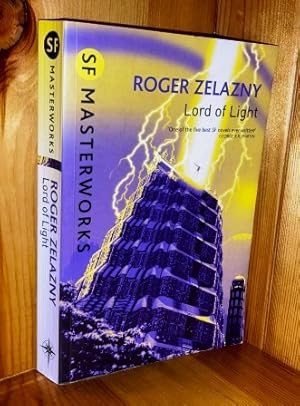 Lord of Light
Lord of LightAnother book from the SF Masterwork series and this one was published in 1967. This highly regarded novel is more fantasy than science fiction and seems to have been timed perfectly to appear in the year of the 'Summer of Love'. India was all the rage and the Beatles were off to India to meditate with Maharishi Mahesh Yogi in February of the next year, maybe one of them had a copy of this novel in their suitcase, which is based on the myths and legends of the Hindu Gods.
Sam the enlightened one sometimes known as Buddha, Tagatha, the binder of demons etc.... has been summoned/released from a prison in the sky by Yama the deathgod. They along with other re-incarnated deities are planning to battle with the city of Heaven where Kali, Brahma, Vishnu, Shiva and Ganesh all live in the celestial city. There are also the Rakasha or demons who Sam had defeated in battle during a previous life: they are whirls of light that can take the form of a human, there is also a zombie army led by the Dark One who like the other groups wish to see Heaven destroyed. The Gods of course have special powers as do the Rakasha and take great delight in carving paths through the luckless humankind who are merely canon fodder. Much of the book is a flashback filling in the complicated history that led to the imprisonment of Sam. The new group is preparing for the final battle with the Gods of the celestial city.
I don't know if the heat was getting to me (the second heatwave of the year - temperatures up to 41 centigrade), but my eyes were glazing over whilst reading this. It did not really hold my interest, it all felt too much like a marvel comics battle of superheroes. This was not the fault of the author who writes good prose and holds the story together well. This reader could not relate to the attributes or the aspects of the gods or the demons, it was all too much fantasy. I felt no connection to the events and just wanted to know how it all finished. When I read the plot summary on the wiki page it said that The Lord of Light is set on a planet colonized by some of the remnants of vanished Urath or earth. The crew and colonists from the spaceship 'The Star of India' found themselves on a strange planet surrounded by hostile indigenous races and had to carve a place for themselves or perish, I presume the crew of the spaceship became the Gods living in Heaven. I do not remember reading any of this in the Masterwork edition that I read. I do however remember eating in many restaurants called the Star of India, but this did not help me much.
Not my kind of book and so 3.5 stars.
29baswood

Rogue Moon - Algis Budrys
Another book from the SF masterwork series: Rogue Moon was published in 1960, but its characters seem to belong to the 1950's rather than the 1960's and this is important because Budrys works as hard to present his protagonists as he does to tell a science fiction story. It is the dawning of the age of space travel and a mysterious artefact has been discovered on the dark side of the moon. It defies description, but occupies a space probably as big as a football field and it kills anybody trying to enter it. Doctor Edward Hawks has built a matter transmitting machine in an effort to probe the artefact. His machine can make duplicate copies of volunteers from earth, which it can transmit to the moon, allowing them to explore the artefact. Unfortunately the duplicates have not been able to last more than a few seconds inside the artefact without being killed and their destruction leads to insanity for the original copy remaining on earth. Hawks is running out of time and monetary support and so when the chief of human resources: Connington (the clue might be in the name) presents him with a candidate who has no fear of death, Hawks grabs at this last chance and agrees to meet Al Barker (for that is his name).
Hawks meets the thrill seeker and genuine all American hero at his home and walks into a tangled web of relationships. The girlfriend Clair Pack (where does he get these names from) is a wisecracking femme fatale who is weighing up her options with Barker and Connington, admitting to Hawks that she cannot help acting like a bitch (the dialogue is typical hard bitten detective novel fare). Hawks himself is not at ease with women, but after the stormy meeting at Barker's home, where the host and his girlfriend are as infuriating as each other, he meets and becomes attracted to a woman: Elizabeth Cummings (yes really) who picks him up on the long walk home.
While all of this has been going on, the artefact on the moon is largely forgotten, but the reader might have guessed by now, that it may have some influence on life on earth. Of course Barker cannot resist the challenge and agrees to be duplicated so that he can explore the mystery on the moon: the second part of the novel details his attempts to conquer the space inside the artefact with the help of Hawks and his team.
The main theme that emerges from the novel is death. Barker must conquer his own repeated deaths to explore the artefact. Hawks assistant Sam Latourette (another significant name) has terminal cancer and must soon accept his mortality. Hawks and his new girlfriend who genuinely fall in love, may have found a way to circumvent their fears with a more humanist approach. Clair Pack and Connington's attempt to ignore and run away from the human condition because of their own ego's is another approach. The puzzle for the reader is: what is the connection with the artefact on the moons surface? All well and good, but in my opinion Budrys's characters are so sharply conformist to 1950's cultural norms; for example the egotistical hero, the femme fatal, the inexperienced lover and the conniving cheat, that they lose some of their influence on the story. The actual exploration of the artefact is also a bit of an anticlimax. I could say that the novel is almost as crass as the names of its characters, but that would be unfair, as after all it is a 1960's science fiction novel that did hold my interest and Arthur C Clarke (2001: A Space Odyssey) may have read it, and so 3.5 stars.
30baswood

Arthur C Clarke - A Fall of Moondust
Originally published in 1961 this novel is now published in the science fiction Masterwork series. I have not been disappointed by Clarke's earlier science fiction novels and this one was another good solid read. It may lack that sense of wonder of some of his novels, but this one shows that Clarke could do characters as well as ratcheting up the tension in an escape from disaster scenario. There is enough hard science and mechanical engineering to satisfy those reader who want to be convinced that they are on solid ground with their science fiction reading, however it is the lack of solid ground that provides the excitement in this novel.
Captain Pat Harris earns a living on the moon by shuttling tourists over one of the moon's seas in a craft named the Selene. The Sea of Thirst is actually made up of very fine dust and the Selene skims along the surface. In the middle of the sea are the inaccessible mountains and Pat Harris provides some thrills for the tourists by hurtling the Selene through a narrow gorge. Coming out of the gorge and back on the sea there is a moonquake and the Selene sinks beneath the dust. There are 20 passengers on board as well as Captain Harris and a stewardess. They have lost all radio contact and are 20 metres below the surface and cannot move under they're own power. They have enough air and provisions to last a week. The story is a rescue attempt against the clock to get everybody out of the stricken vehicle. The moondust flows like a liquid making it impossible for individuals to reach the surface and threatens to encase the stationary vehicle.
Captain Pat Harris is a competent pilot of the Selene, but lacks ambition to become a space pilot, he is falling in love with the stewardess. He is fortunate that his passengers include a range of scientists as well as a celebrated, but retired spaceman. They must work together to keep their spirits raised while waiting to be found. Clarke's story alternates between the efforts of the passengers to survive the catastrophe and the efforts of the scientists and engineers to find the Selene and then launch a rescue mission.
Clarke does a good job in bringing his characters to life and the dialogue between them is well handled, tempers get frayed, but also friendships form. It is to Clarkes credit that life in the stricken craft is as interesting as the rescue mission.
The story takes place in 2042 and from snapshots of the conversation in the Selene we learn bits of the history that has enabled man to conquer the solar system. Unfortunately money still controls all men's actions and male chauvinism is similar to what it was in 1961. On the more positive side there is recognition of the destruction of ethnic people on earth, as one of the passengers a scientist and an aborigine tells moon born Pat Harris of the attempted elimination of his people and their culture. This is a good disaster novel whose moon setting creates additional and unforeseen problems. It is well written and a 4 star read.
31baswood

Philip K Dick - The Man in the High Castle
There are fourteen novels by Philip K Dick in the Science Fiction Masterwork series, totalling now at 193. This 1962 novel was the breakthrough novel for Dick it won the Hugo award in 1963 and was the next one on my list to read. It is an alternative history novel. In Dick's imaginary world; the Germans under Adolph Hitler had won the second world war some fifteen years ago in 1947 and now in 1962 America was suffering under the rule of Nazi Germany and the Imperial state of Japan, both nations having influence in various parts of the USA. Nazi Germany has pushed on with technological developments that has resulted in rockets now able to reach Mars and Venus. They are the most powerful of the two nations that control the rest of the world. American citizens are of a third world status and are trying to come to terms with the struggle to survive under the yoke of the leading two powers.
Dick tells of several American characters attempting to secure a living in these changed times. Robert Childan runs an antique shop in San Francisco which is now part of the Pacific States of America under Japanese Control. He is riding a wave of Japanese interest in American items which were in use before the war: many of the artefacts were destroyed in the war and have become a rarity. He has important Japanese customers who are collectors and he must adapt to their cultural mores as well as securing the items that will satisfy their cravings. Frank Fink who keeps his jewish ancestry secret has recently been fired from his job as a machine tool expert and has recently supplied to Robert Childan a counterfeit colt 44 that he has made in his workshop. He is now going into the business of making modern contemporary American jewellery. Julia Frink the estranged wife of Frank has recently met Joe CInnadella who has promised that he will take her on the trip of her dreams and shows her large bankrolls of money to fund their extravagance. All the characters frequently consult the I-Ching when making decisions and must interpret the weird statements that the I-Ching devines to them. Joe and Julia become avid readers of a novel that is sweeping America called 'The Grasshopper lies Heavy' by Hawthorne Abendsen which tells of an alternate history which bears more resemblance to our own history for example in the 'Grasshopper lies Heavy' the allies won the second world war and America became the most powerful country. Abendsen is the Man in the High Tower and Julia becomes suspicious that Joe is an assassin who is using his relationship with her as cover so that he can murder Abendsen.
If this sounds complicated then I can vouch for it being even more complicated because throughout the novel references are made to the history of the German victory in the second world war and the subsequent progroms carried out by the Nazi's that resulted from it. At the current time of the novel there is a power struggle going on in Berlin. Martin Boorman who succeeded Hitler has recently died and Joseph Goebbels is launching a bid for power with the prospect of more ethnic cleansing with his project Dandelion. Agents from the Nazis are meeting Japanese officials as part of the power struggle. Americans are standing helplessly by, hoping that a more liberating clique seizes power in Berlin, but are hedging their bets with the officials with whom they come into contact. Of course a story as complicated as this will have plot holes, but this is science fiction where plot holes are almost de rigueur. Dick's characterisation is good for this genre and there is little evidence of racism and misogyny from the hands of the author. It is dark, it is a little weird, but Dick creates an atmosphere that can grip the reader right to the end of the story, even in a story like this one, that is open ended. 4 stars.
32Macumbeira
>31 baswood: Seems like an interesting book. On my TBR list !
33baswood

The Drowned World - J G Ballard
Earth reverts back to the Triassic age in Ballard's unforgettable The Drowned World. Published in 1962 and now part of the science fiction masterwork series. I read this as a teenager and picking it up today nearly sixty years later, it all came flooding back; the lagoons and the claustrophobic, melancholic atmosphere, the feeling of impotency, powerlessness and an eventual bowing to the inevitable; unforgettable. Ballard's hero Kerans struggles to make sense of the changing world, he withdraws from the small unit of men charged with charting the overheating climate, he tries to come to terms with his ecoanxiety, tries to adapt, tries to embrace the situation, almost welcomes being overwhelmed. A strange kind of hero, but he fits Ballard's world like a glove.
The change to the climate in this novel is nothing to do with man. Prolonged solar storms have led to a deterioration in the earths ionosphere and solar radiation has bombarded earth resulting in overheated tropical climates. Only the artic circle has a temperate climate, but the temperatures are continuing to rise and while scientists have predicted an end to the solar flares, there is no end in sight yet. The earth has rapidly degenerated to a new Triassic age, which was noted for its rise in sea levels and the appearance of early mammals. The action is situated in London which is now largely underwater and a series of equatorial lagoons forms the new landscape. High rise buildings are keeping their heads above water, but the silt washed down is clogging everything up and creating giant mudbanks. Giant lizards, Iguanas, crocodiles and snakes share the lagoons with a variety of fish; giant mosquitoes, vampiric bats and horse flies are food for early species of birds. Vegetation in the form of giant bushes and trees is taking over all buildings and establishing itself in the newly formed mudflats. In the 70 years since the eruption of the solar flares the animal kingdom has evolved and is teeming with life, while man struggles to keep a foothold.
Kerans is a scientist attached to a small unit led by Riggs on military lines, but chains of command have broken down. Kerans has made a bolt hole for himself in the upper floors of the Ritz hotel and has access to a certain amount of luxury. Beatrice Dahl his sometime lover lives in another luxury apartment block, but oil for cooling systems is beginning to run out and temperatures are unbearable after 10 am. Kerans enjoys spending time on his balcony looking down at the lagoons plotting his day, his duties, but something else is becoming apparent. The psychology of the human mind is changing, people in Rigg's unit are suffering from bad dreams and insanity. Hardman a fellow scientist goes rogue, drawn to travel South towards an even more hostile landscape:
"was the drowned world itself and the mysterious quest for the south, which had possessed Hardman no more than an impulse to suicide an unconscious acceptance of his own devolutionary descent, the ultimate neuronic synthesis of the archeopsychia zero"
This idea of man's mind, his outlook adapting to the changes around him becomes an important theme in the book. The arrival of a pirate crew in the lagoons; looters and psychotics, over halfway through the book threatens to spin the novel in another direction, but Ballard juggles his themes in an exotic mix that is captivatingly satisfying. By todays standards the 160 odd pages of this book would appear concise in world building terms and there is only one female character who does not quite live up to her promise of being a femme fatal; black people are negroes and belong firmly to the pirate band, however this is an early sixties science fiction novel with some fine writing that has not lost its power to amaze and so 5 stars.
34Macumbeira
Great review ! A 5 star. Hup on my TBR list : )
35baswood

Kurt Vonnegut - Cat's Cradle
Published in 1963 and now part of the science fiction masterwork series, this novel is more of a satire on the state of the world rather than a science fiction adventure story. The state of the world in the 1960's that is, but we would struggle to see much difference. The book takes a scalpel to religion, scientific research for weapons manufacture and to colonialism, but it also examines the nature of what is true. To work well satire needs to be funny as well as thought provoking and it needs to exaggerate it targets in such a way that the reader gets the message, but wonders if the exaggeration bears much reality to the item that is in the writers crosshairs. There is a story of sorts on which the author hangs all his angst and which comes together in its logical conclusion; after all John who tells his story in the first person is engaged in writing a book entitled "The Day the World Ended."
"A Lovers a liar
To himself he lies
The truthful are Loveless
Like Oysters their eyes!"
Ditties or calypso's are littered throughout the book and the above is one of my favourites. John is studying the religion of Bokonism from which many of these little songs are taken, but at the start of the several books of Bokonon there is the warning:
"Anyone unable to understand how a useful religion can be founded on lies will not understand this book either"
John is immersing himself in Bokonism as part of his research for his book "The day the world ended" his angle is to write down exactly what people were doing and thinking when the atomic bomb was dropped on Hiroshima. He is particularly concerned with the scientist credited with making the breakthrough in the weapon research and his family and entourage. He names the scientist Frank Hoenikken and the story unfolds when he tracks down his children: Newt who is a midget, Frank who claims to be a scientist and Angela who is a plain tall woman without any discernible qualities. John travels to the island of San Lorenzo, which its ruler/dictator Papa Monzano claims is a paradise in the West Indies. Frank is Papa Monzano's number two with the title of Colonel and John arrives with a bicycle manufacturer and an American diplomat to find that most of the islanders live in dire poverty, where the outlawed religion of Bokonon flourishes and where law and order is kept through threats of the Hook (anybody who had visited Madam Tussaud's in London in the 1960's will know what this was).
The book is made up of 127 punchy short chapters, many of which are dominated by dialogue between the characters: this is a satire and so the characters are exaggerated like everything else, and any relation to real life people is of course a coincidence. The novel was published the year after the Cuban missile crisis when the world was breathing a sigh of relief and I think it is useful to try and imagine that era to appreciate the satire. Similar books have been written since Cat's Cradle and so it is difficult to understand what effect it had on its readers at that time. It should be noted that it was published some six years before "Slaughterhouse 5", but it apparently sold well in paperback. Reading it is not an uplifting experience, but of course today the satire has lost its bite and it can appear a little quaint. However it is still a 4 star read.
36baswood

Walter Tevis - The Man Who Fell To Earth
Extra Terrestrial Goes Native in U.S.A
Tevis was not a pulp science fiction author, but his one famous science fiction novel: The man Who Fell To Earth (1963) was successfully filmed starring David Bowie and has also been published in the science fiction Masterwork Series. Tevis had success with The Hustler, The Color of Money and the Queens Gambit, which were also filmed. He was a quality popular writer and member of the Authors Guild.
T J Newton walks into a small town in Kentucky pawns a gold ring and hires a patent lawyer to set in motion a series of new inventions that could transform some aspects of life on earth. He has a five year plan to become a multi-billionaire to enable him to develop his own space research project. He is a gangly tall human like being who has trouble in earths heavy gravity and employs a close circle of workers to further his aims.
The novel charts his progress and also that of Bryce a chemical engineer and scientist who is suspicious of T J Newtons aims, becoming convinced that he is an alien. The character of T J Newton and his struggles with ill health are well developed as are the small circle of people around him. The politics on earth have reached a dangerous stage where nations are flexing their new atomic muscles, but T J Newton is given the time to establish his new patent inventions and all our sympathies are with this uncomfortable figure as he quietly goes about his business. He employs Betty Joe a mature woman who likes to drink as a nurse and helper and he gradually takes to alcohol himself. As his project develops he starts to question his own motives and becomes more reclusive.
The mystery surrounding T J Newton is revealed to the reader well before the story ends, but it is T J Newton's own integration into the United States and the lack of interference from the government that holds the interest. The strangeness surrounding this lonely figure on an earth that seems to be heading for destruction makes this a 3.5 star read.
37baswood

Philip K Dick - Martian Time-Slip
Published in 1964 Martian Time Slip is one of the many Philip K Dick novels in the masterwork series and I find Dick at the top of his game with this one.
It is set on the planet Mars, which has been colonised for some years, however despite the advertising life is tough. Water is strictly rationed, colonists cannot be self sufficient and so rely on expensive imports from earth. The earlier enthusiasm for a new life on a new planet is faltering despite issues of overcrowding on earth. Jack Bohlen is a repair man flying around the desolate planet patching up faltering machinery. Arnie Knott has become a powerful man in the colony and lures Jack to work for him. Jack has suffered from schizophrenia in the past and contact with a neighbours ten year old son who is currently totally uncomunicative is drawing Jack back to another bout of illness. Mars has an indigenous population (Bleekmen) something like the aborigines in Australia and the colonists confine them to the desert, however they have a latent power and can communicate with those children whose mental illness is severe in nature. There is a rumour that important mineral deposits have been discovered in the desert and speculators from earth are arriving to buy up the land. Arnie Knott believes that he can make use of the Bleekmen and the schizophrenics to beat the speculators to the land grab.
The time slip in the title of the book refers to the idea that the schizophrenics live outside of time and may have the power, when harnessed with the Bleekmen to slip backwards in time. Philip K Dick slowly reveals this narrative as he concentrates on setting out the lives of a few of the inhabitants. I enjoyed his portrayal of most of the characters especially Arnie Knott and Jack Bohlen, however it was his experiments with the narrative drive that was most eye catching. He repeats certain scenes from different points of view as though there has been a slippage of time not quite flashbacks but interruptions in the linear narrative. They are not intrusive and easy enough to follow when the reader understands what is happening. Three major themes emerge; the ravages of time on people and buildings, the colonists failure to understand or adapt to their environment and the treatment of people with severe mental illnesses.
The world building of the earlier chapters is effective enough and the characters that populate the book are believable. There is the mystery of the Bleekmen and the machinations of Arnie Knott leading to the narrative climax, this was more than enough to keep me reading as well as some interesting comments on education, loneliness and the sex lives of people living in harsh conditions. 4 stars.
38baswood

Brian Aldiss - Greybeard
This was the next book in the SF Masterwork series published in 1964. Brian Aldiss was a prolific author of mainly science fiction novels as well as a critic and editor of science fiction stories. He was an English author and particularly with Greybeard follows in the tradition of other English authors of the genre: H G Wells and John Wyndham in that his books are generally well written and avoid super-hero characters. Greybeard is a dystopian novel and is set in the English home counties which lends itself to a more parochial environment.
Greybeard is 56 years old and is carrying out sentry duty around the lands of Sparscot a small community somewhere near Oxford in England. He and his wife are the youngest people in a community struggling for survival after the Accident. In the late 1960's huge atomic bombs had been tested in the earths upper atmosphere which had resulted in a shower of radiation material which caused sickness and death on all parts of the globe and affected the reproductive organs of all human beings and larger animals. There had been no children born for over 50 years. Sparscot is run as a fiefdom by a local strongman and Greybeard has lived there for 15 years, but the warlord is losing his grip and Greybeard has been preparing a boat to take him and his wife down the river Thames to the communities that are said to be surviving along the coast. The dwindling population and gradual sinking of the land has left much of the countryside battling against rising water levels. Massive lakes have formed and the natural world has quickly started to seize back control. Rodents and small mammals who have been largely unaffected have become predators of an ageing human population. There are rumours of goblins living in the woods.................
Aldiss takes the theme of an ageing population with no hope for future generations. People who have survived the aftermath of the accident and who have not succumbed to melancholia continue to fight for their lives. Religious communities have sprung up and folklore and magic is increasingly playing a role in the lives of the survivors, rumours of children being born persist.
A world of wrinkly old people slowly losing their grip on day to day life maybe a nightmare for some people and I look around at some of my friends and I can appreciate that. Aldiss takes these fears and weaves them into a story where petty squabbles and reluctance to work for the good of the community take precedence. The strength of this novel is the creation of a world, where human beings are slowly sinking into a quagmire that they have created. In many ways it seems all too believable and the gloom and melancholic atmosphere was felt particularly keenly by this older reader. It does not work so well as a road movie novel, because Greybeard hardly gets going in his bid to reach the coast. 4 stars for readers over the age of sixty.


